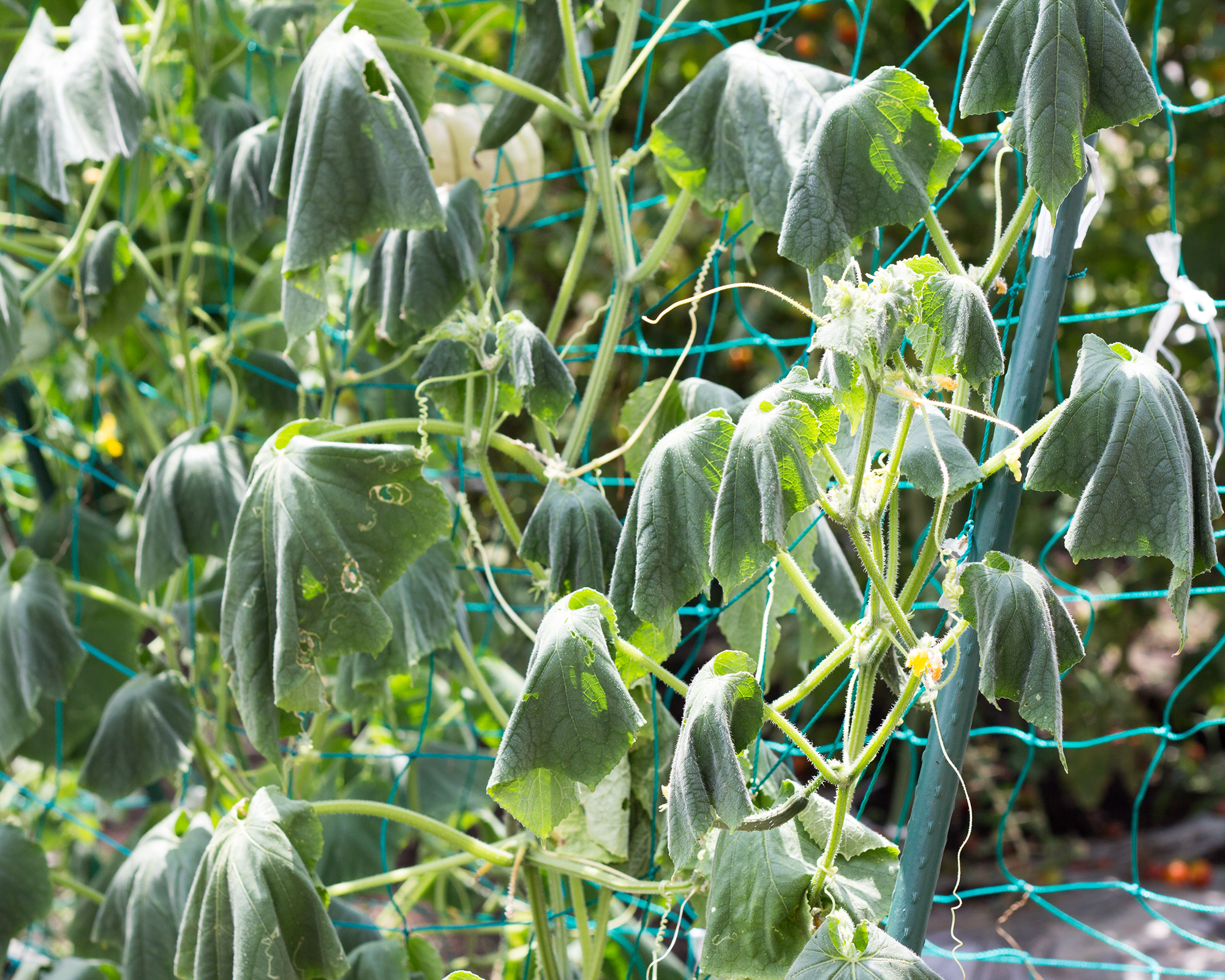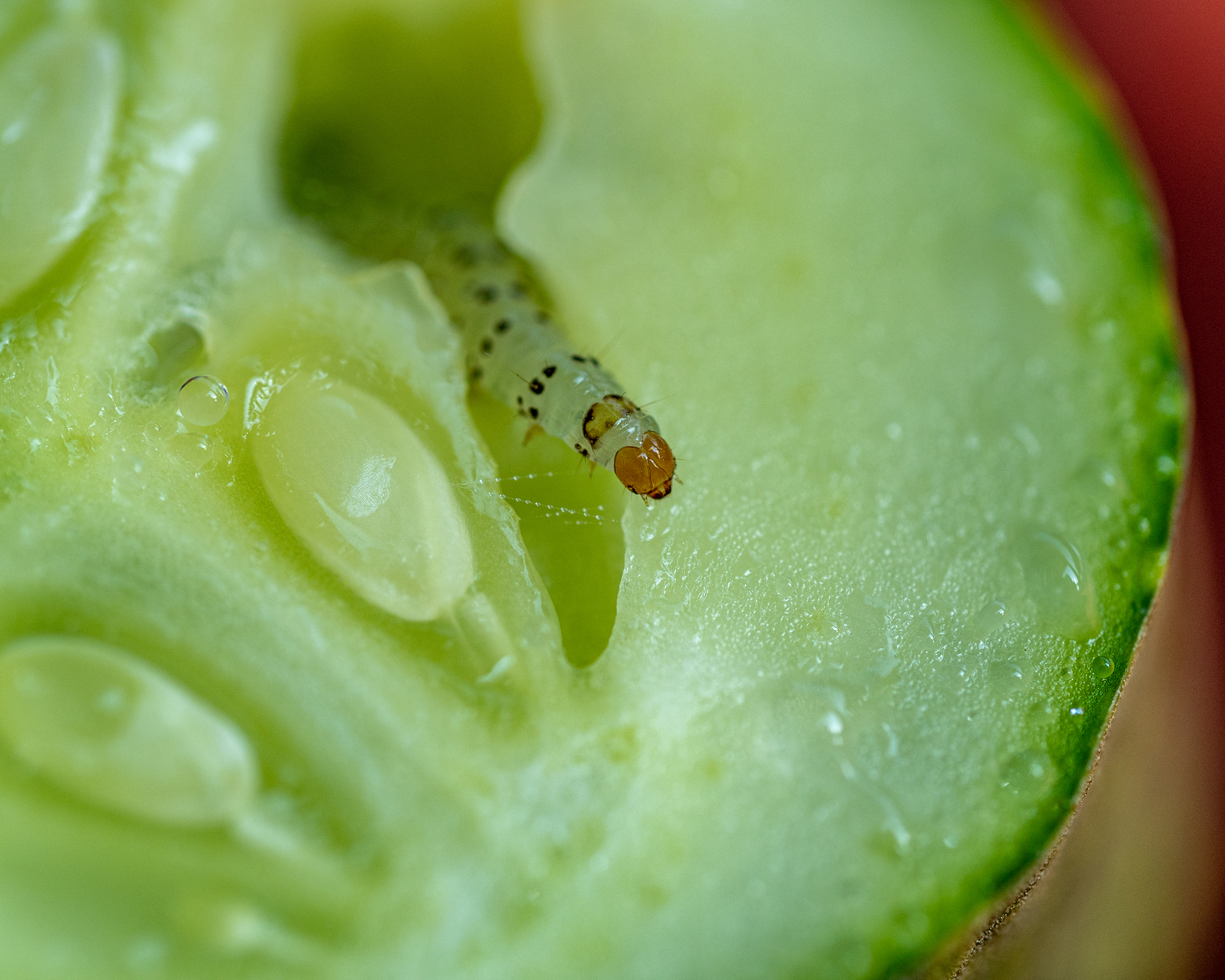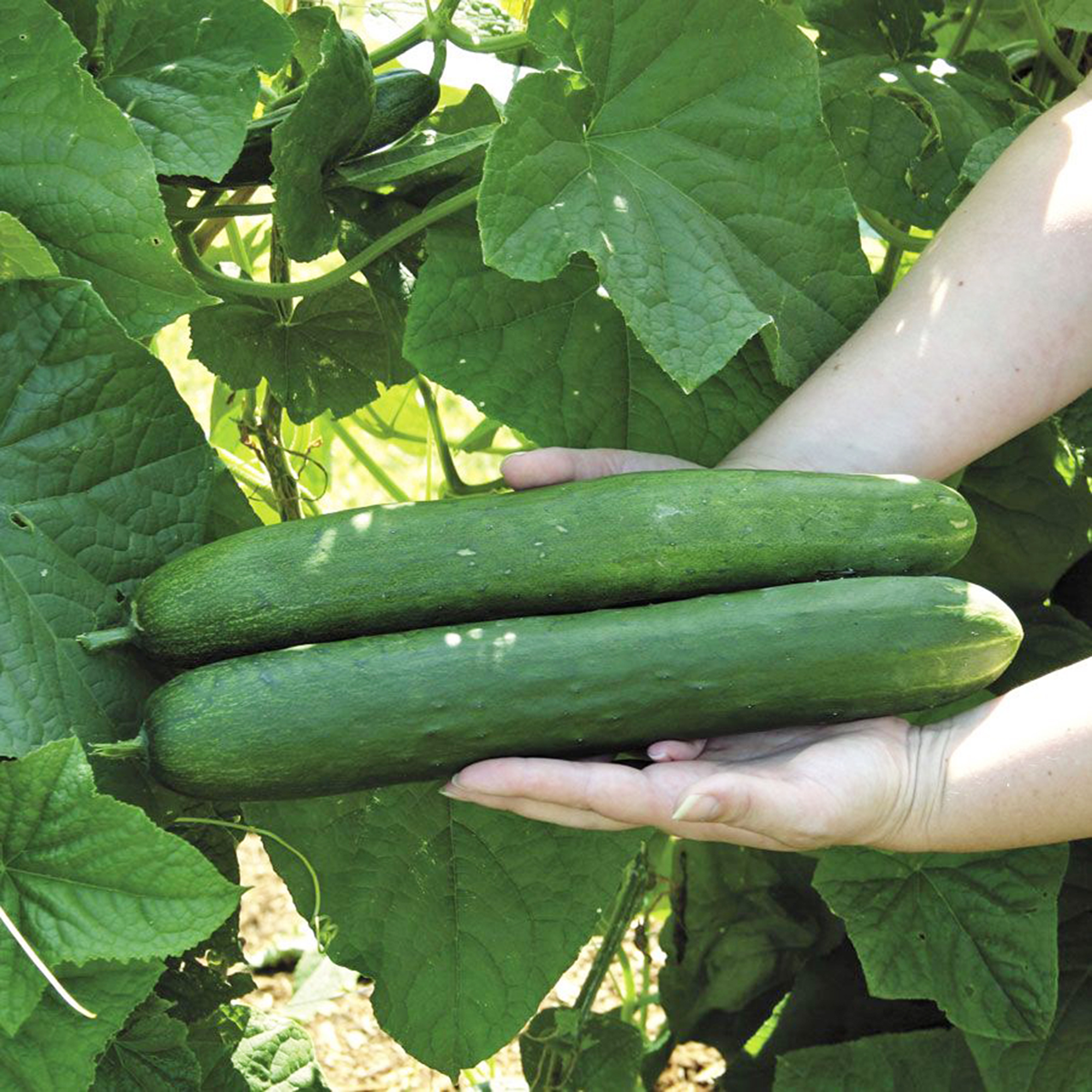Top 10 Cucumber Plant Problems – And How To Fix Them Fast
Discover the most common problems when growing cucumbers and learn effective solutions to keep your plants happy, healthy, and productive all season long.


Melanie Griffiths
Cucumbers are one of summer’s crispiest, juicy treats, featuring prominently in salads, sliced on sandwiches, or just eaten fresh out of hand. Their high water content makes them especially refreshing, lending a bright crunch to many dishes.
Growing cucumbers is fairly easy provided you have nutrient-dense, well-draining soil, and a full sun location. There are many varieties of cucumbers you can grow in your home vegetable garden, with the option of slicing or pickling types.
However, cucumbers can suffer diseases, pests, and cultivation issues like any crop. If your plant is looking a little sad, perhaps the culprit is one of these common issues.
1. Cucumber Beetles

If your cucumber plant leaves are beginning to resemble Swiss cheese, it might be cucumber beetles. These are common pests of over 200 different types of plants, many in the cucurbit family. Although quite pretty, the beetles will chew the leaves resulting in lacing, holes, and ragged edges. They may also feed on the stems and flower buds.
Cucumber beetles are yellow-green with black markings. There are both striped and spotted varieties and they are both vectors for certain diseases such as fusarium wilt.
Spray neem oil on the plants at the first sign of damage. This natural control prevents insects from feeding, which will eventually kill them.
2. Bacterial Wilt

Limp, drooping leaves that appear to be suffering from lack of water are the first clue of bacterial wilt in cucumbers – assuming the plants are well irrigated.
Sign up for the Gardening Know How newsletter today and receive a free copy of our e-book "How to Grow Delicious Tomatoes".
The disease is transmitted by striped cucumber beetles. It overwinters in their bellies, and in spring, the beetles awaken, start feeding on plants, and spread the disease.
Bacterial wilt blocks the transmission of water into the vascular system of the plant. Sadly, there is no cure – the plants will eventually fail and die. If you suspect this disease in your plant it is best to remove it from the garden plot and destroy the plant.
Happily, there are several wilt-resistant cucumber varieties such as County Fair F1 and Little Leaf H-19.
3. Failure to Fruit

It is the fruit we are growing the cucumber plant for, so the lack of cucumbers is a huge concern. In most cases, where there are flowers but no fruit, the issue is low pollination rates. Lack of pollination can also result in slow-growing cucumbers, and cucumbers falling from the vine.
If you aren’t seeing bees zipping around your yard at regular intervals, try adding plants to attract pollinators.
Hand-pollinating cucumbers is also a good option to boost yields and involves using a small brush to transfer pollen from male to female flowers.
Another reason for a lack of cucumbers could simply be the earliness of the season. The first flowers produced by the plant are male and will not produce fruit. Be patient and wait a few weeks for female flowers.
4. Anthracnose

Water-soaked, yellow leaf spots are some of the first symptoms of cucumber anthracnose, a common fungal disease that affects hundreds of plants. It likes the weather warm and wet when there is high humidity.
The leaves are the first area to show symptoms, with yellow to brown spots. The spots become larger as the disease progresses. On stems and petioles, the damage appears as elongated tan cankers. Maturing fruit may also succumb, developing soft, brown lesions that will sport reddish spores.
One of the main ways the plants get infected is through previous year’s plant debris. Cleaning up old plants and following crop rotation guidelines are key to preventing the disease.
Use registered fungicides at the first sign of the disease and ideally purchase resistant varieties.
5. Powdery Mildew

Powdery mildew is a common fungus that affects many plants, especially those with larger leaves. It begins as irregular grayish-white spots and spreads into larger patches. In bad infections, the entire leaf will be covered and the fungus can move down into the stems.
Most powdery mildew starts to appear in mid to late summer. The spores are windborne and most prevalent in warm, dry conditions. Leaves can die and drop off, reducing photosynthesis and thus overall plant health.
The fruit is rarely affected, but fewer and smaller fruits are produced. Also, due to less shielding foliage, the cucumbers may suffer sunscald making the skin rough and unappealing.
Space plants so they have plenty of air movement, use resistant varieties, and resort to fungicides if the infection is rampant.
6. Yellow Leaves

Yellow cucumbers and leaves are a sign the plant is not happy. The cause could be inadequate water, fertilizer, transplant shock, or too little light.
Cucumbers need plenty of water as might be deduced by the amount of moisture in the fruit. Use a balanced fertilizer twice during the growing season, and incorporate plenty of organic, rich material into the soil before planting.
If the plants aren’t getting eight hours or more of sunlight per day, the yellowing could be because the plant is not photosynthesizing enough.
7. Spider Mites

You might not be able to see them because they are very tiny, but spider mites can do a lot of damage for their size. They are sucking insects that penetrate the stems and leaves of the plant, eating the sap. Not only do the holes they make pose a problem, but a large infestation can diminish plant vitality quickly.
On cucumber plants, the leaves will develop reddish and yellow irregular areas. You might also observe what looks like dirt on the underside of the leaves. If you put a clean, white piece of paper under the leaf and shake it, tiny specks of “ dirt” might coat the paper. These are spider mites.
They like hot, dry conditions, and under-watered plants are a target. There is a parasitic wasp you could try to introduce but in most cases, an insecticide, preferably an organic one such as neem oil, should be used at the first sign of damage.
8. Deformed Fruits

Cucumbers are generally quite uniform with an elegant curve and slender bodies, so deformed cucumbers are a sign something is wrong.
If the fruit is pinched, has a smaller end, or any other form of misshape, it may be suffering from too little water. Inconsietent watering will cause fruit to form in an irregular way.
If the blossom end is fat and the opposite end is skinny, this indicates the plant had enough water when the fruit was beginning to form, but not enough as it matured. Cucumbers need about 1 inch (2.5cm) of water daily.
9. Holes in Fruit

Holes in cucumbers may be caused by cucumber beetles or slugs, but pickleworms are common culprits. They are the larvae of the adult pickleworm moth and do damage from the inside out.
The larva burrow into fruit and eat the succulent, moist flesh inside, expelling frass or waste out through the entry hole. The result is a mushy, rotting fruit.
Pickleworms are most prevalent in the warmer regions of North America. The larvae enjoy the blossoms as well as the cucumber, and can damage these to the extent that there is no fruit.
Erect row covers to prevent adult moths from laying their eggs on the plants or use an insecticide where necessary.
10. Mottled Leaves and Pale Fruits

Cucumber mosaic virus affects many cucurbits. The vectors that spread the virus are aphids, which introduce the virus into the vascular tissue through their sucking activities.
Symptoms develop around six weeks after plants have been in the ground. Random white, yellow, and green spots appear across the surface of the leaf. Plant growth becomes stunted and few if any fruit forms.
Prevention starts with eradicating aphid infestations. Any fruit that does grow will have a pale grayish-white color.
Unfortunately, there is no cure for this virus. Plants should be pulled up and destroyed.
This article features products available from third-party vendors on the Gardening Know How Shop.

Bonnie Grant is a professional landscaper with a Certification in Urban Gardening. She has been gardening and writing for 15 years. A former professional chef, she has a passion for edible landscaping.
- Melanie GriffithsEditor in Chief
